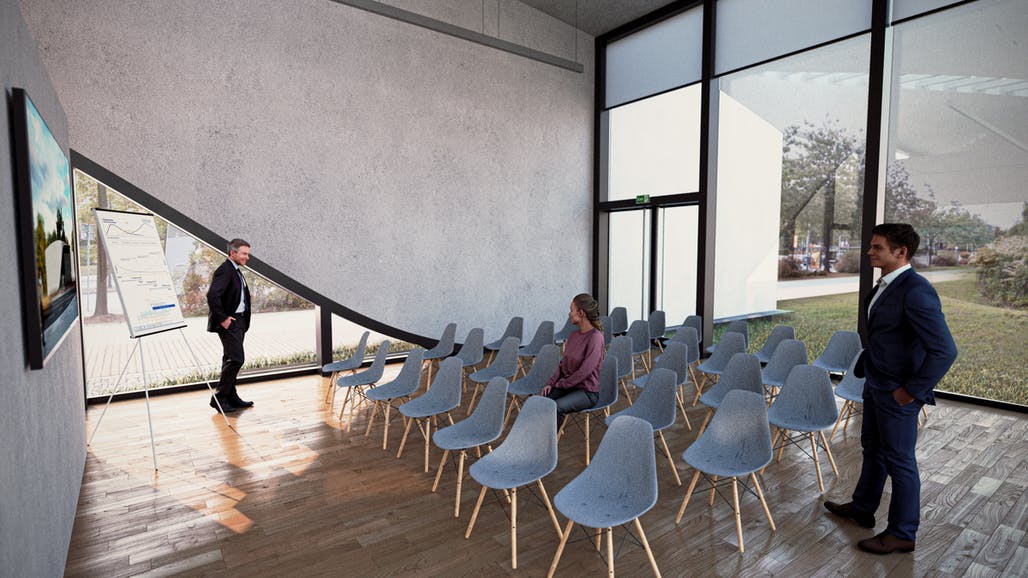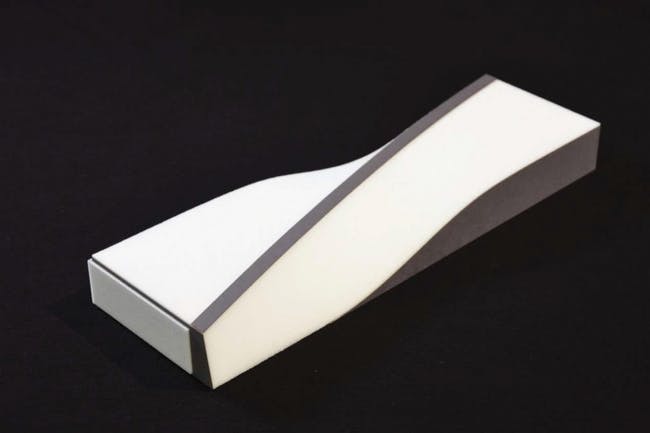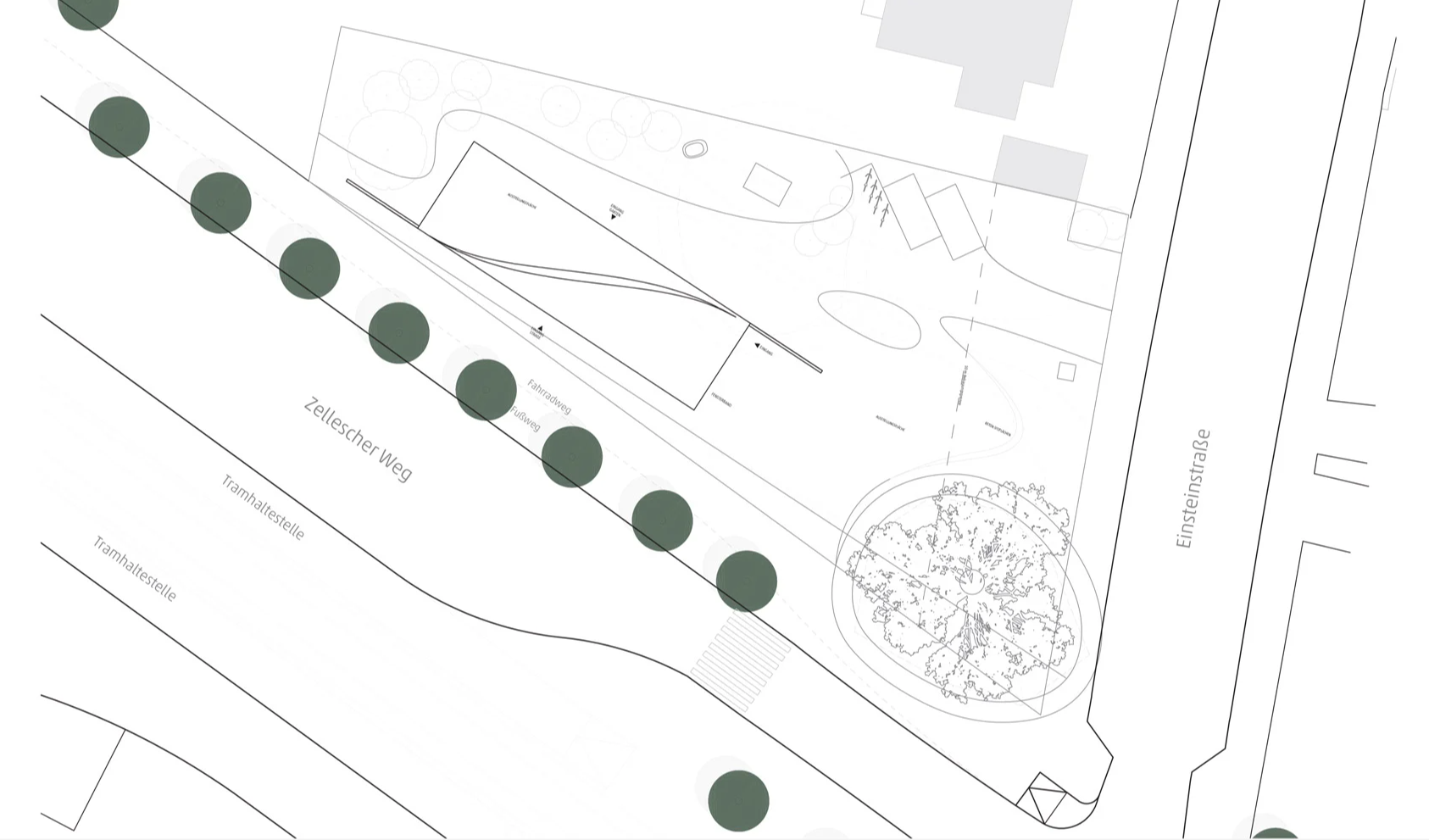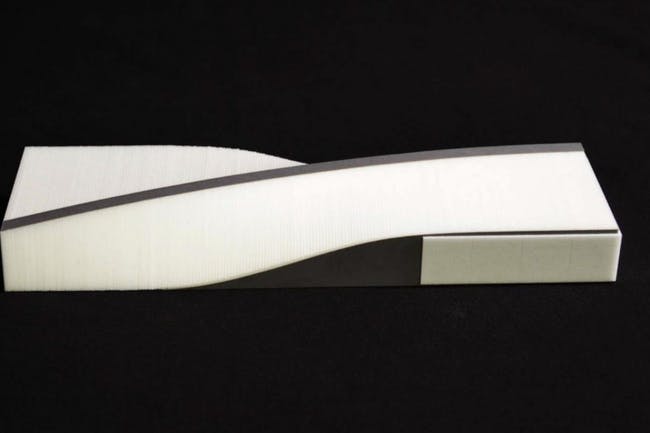
In collaboration with the researchers at the Technical University, German architecture firm Henn has designed Cube- a two-story building that is made entirely of carbon fibre reinforced concrete instead of steel. Located on the premises of Technical University Dresden in Germany, the building is labelled as the world's first carbon concrete building. The 2,200 square-foot structure will accommodate classrooms, presentation spaces, a lab, and a small kitchen. Read more about the building and this wonder material at SURFACES REPORTER (SR):
Also Read: Carbon Fibre Entwined With Bamboo -The Material of the Future | Kengo Kuma
The Institute for Solid Construction at TU Dresden, headed by professor Manfred Curbach, in association with Henn, created the building in two parts- a precast box and the twist, which is a double-curved roof supported by lightweight and bendable composites.
What is Carbon-fibre reinforced concrete?
Carbon-fibre reinforced concrete is a composite product that is made of carbon fibres and polymers. Carbon fibres are ultra-thin threads of almost pure carbon crystals that provide strength and stiffness to the structure, while polymers hold the fibres together in a matrix.
These fibres- whether micro or macro can be either natural or synthetic. Researchers claim concrete reinforced with carbon fibre is four times stronger than concrete reinforced with steel rebar and four times lighter due to the fewer structural sections. Also, carbon-reinforced concrete can significantly increase the life of the building in which the composite is utilized.

The concrete is reinforced with thin carbon fibres using a process of thermal decomposition known as pyrolysis. These yarns are used to form a mesh onto which the concrete is poured. The carbon fibre mesh is strong and rust-proof. Also, the formed structure can be much thinner as much of the heaviness of the steel-reinforced concrete is because of the need to stop water penetration, triggering oxidization of the bar.
Cube Design Features Lightweight and Flexible Properties of Carbon Fibre
The fluid-like design of the Cube ensures the lightweight and flexible properties of carbon fibre. The building features a wall that bends up to become a roof, suggesting a futuristic architecture in which 'environmentally conscious design is paired with formal freedom and a radical rethinking of essential architectural elements.'

The ceiling and the wall do not look like separate components in the design but practically blend into one another.
Also Read: Asif Khan Designed Surreal Carbon Entwined Entry Portals for Expo 2020 Dubai, Inspired From Traditional Mashrabiya
C3 : Carbon Concrete Composite
German Federal Ministry of Education and Research supports the structure, which is a focal point for a major Technical University Dresden research project called C3. The project's main goal is to discover the potential uses of this new wonder material in the building industry.
As per Henn, "Carbon concrete could contribute to more flexible and resource-saving construction processes, and switching to carbon concrete could reduce the CO2 emissions from construction by up to 50 per cent."

This material also allows the creation of distinctive shapes. There are some extremely thin concrete building components or reinforcements or benches. The focus is on minimizing the excessive amounts of concrete that are being used today in construction.
Researchers Developing Bio-based Carbon Fibres For Lesser Carbon Footprint
The carbon fibre used in CUBE is produced from petroleum-based polyacrylonitrile or PAN. As the carbon footprint of carbon fibre is high, researchers have been exploring ways of creating carbon fibres out of a common plant-based substance called lignin. It is actually a waste material in the paper manufacturing industry.

TU Munich is currently looking into ways to produce carbon fibre from algae oil. However, bio-based carbon fibres can't replace petroleum-based ones as they don't yet offer the same performance.
Keep reading SURFACES REPORTER for more such articles and stories.
Join us in SOCIAL MEDIA to stay updated
SR FACEBOOK | SR LINKEDIN | SR INSTAGRAM | SR YOUTUBE
Further, Subscribe to our magazine | Sign Up for the FREE Surfaces Reporter Magazine Newsletter
Also, check out Surfaces Reporter’s encouraging, exciting and educational WEBINARS here.
You may also like to read about:
Scientists at GE Research 3D Printed A Portable Device That Produces Water Out Of Thin Air
Associated Architects unveil plans for worlds first net zero carbon ready skyscraper Curzon Wharf in Birmingham
And more…